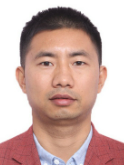
Prof. Peiqing Liu
Beihang University, China
Professor Peiqing Liu, Beihang University, serves as the responsible professor of the Ministry of Education's Fluid Mechanics Laboratory and supervises doctoral students. He is a council member of the Chinese Society of Aerodynamics. In 2000, he received the National Award for Outstanding Doctoral Dissertations, and in 2003, he was honored with the National Award for Outstanding Doctoral Dissertations. He has long been engaged in aerodynamics, hydrodynamics experiments, and numerical simulation work. In recent years, through key and general projects funded by the National Natural Science Foundation of China and pre-research initiatives, he has conducted systematic and in-depth investigations into complex flows in engineering using theoretical, experimental, and numerical simulation approaches. His findings have resulted in over 100 papers published in domestic and international academic journals, five authored books, and numerous SCI and EI indexed publications. Discipline: Fluid Mechanics, Aerodynamics. Primary Research Areas: Vortex shedding and flow control; high-angle-of-attack aerodynamics for aircraft; vortex interaction and control in canard configurations; high-speed laminar flow control technology; modern lightweight high-efficiency propeller design and optimization; low-Reynolds-number flow mechanisms and control in aircraft; aerodynamic performance of large aircraft during takeoff and landing; seaplane emergency landing performance studies. Teaching and Talent Development.
.

Prof. Alam Md. Mahbub
Harbin Institute of Technology, Shenzhen, China
Alam Md. Mahbub is a professor at Harbin Institute of Technology (China) since 2012. He worked as a senior lecturer at the University of Pretoria (South Africa), research and postdoctoral fellows at the Hong Kong Polytechnic University, and lecturer at the Rajshahi University of Engineering and Technology (Bangladesh). More than 380 technical articles are authored and co-authored, including 190+ SCI journal papers. His papers are well-cited, 5800+ (h-index 43) in WoS database and 8800+ (h-index 50) in the google database. He has been listed as a highly cited researcher for 2018 - 2022 (single year) by Web of Science, ranked top 2%. e is the author of two books. He has edited four special issues in ‘Wind and Structures, an International Journal’ and one in Energies. His research has mostly involved flow-induced vibrations, bluff-body wake, wind load on structures, fluid-structure interactions, hydrodynamics of swimming animals, and energy harvesting from wind and ocean current. Prof Alam has received a number of awards: Japan Government Scholarship (monbusho) for Masters and PhD studies; JSPS (Japan Society for Promotion of Science) Postdoctoral fellowship; South Africa National Research Foundation (NRF) rating ‘Promising Young Researcher, Y1’; China 1000-young-talent scholar; Shenzhen High-Level Overseas Talent; and 2015 Shenzhen Outstanding Teacher. He is an editorial board member of ‘Wind and Structures, an International Journal’.

Prof. Yongsheng Ou
Dalian University of Technology, China
Professor Yongsheng Ou is a doctoral and master's supervisor. He has been selected for the national "Ten Thousand Talents Program" as an innovative leading talent and the Chinese Academy of Sciences' Hundred Talents Program, among others. He also serves as an expert in the overall group of the Ministry of Science and Technology’s 13th Five-Year Plan Key Project on Intelligent Robots and as a member of the Robotics Committee of the Chinese Association of Automation. Currently, he is a professor at the School of Artificial Intelligence, Telecommunications Department, Dalian University of Technology. His research primarily focuses on robot grasping control, navigation, SLAM, and unmanned system development. He has conducted in-depth research on SLAM technology in complex dynamic environments and achieved significant results. His research has not only improved the stability and accuracy of SLAM technology in such challenging scenarios but also laid a solid foundation for the further development of robotics and autonomous driving technologies.mProfessor Ou has led multiple national-level research projects, including the Science and Technology Innovation 2030 "Next Generation Artificial Intelligence" major project, the Ministry of Science and Technology’s 863 Program, and key projects of the National Natural Science Foundation of China. His research findings have been widely published in international journals and conferences, demonstrating his outstanding contributions to the field of robotics and intelligent system control.

Prof. Shaohua Luo
Guizhou University, China
Professor Luo is a distinguished young scientific talent at the provincial level, leader of an innovative research group in the province, a specially appointed expert for the provincial “Enterprise Innovation Post,” and an academic leader of disciplines at Guizhou University. His main research areas include dynamic analysis of special electromechanical systems and networks, circuit design and intelligent control, and the development and application of electromechanical control systems based on ARM/FPGA architectures. In recent years, he has led research projects funded by the National Natural Science Foundation, the provincial Natural Science Foundation, and the China Postdoctoral Science Foundation, and has participated in research under the national “863 Program” and the National Natural Science Foundation. Professor Luo has achieved substantial theoretical and applied results in key scientific and technological areas such as MEMS/NEMS, autonomous intelligent systems, dynamic analysis of high-performance electromechanical drive systems and equipment, integrated circuit design, intelligent control, and system integration. He has published over 60 research papers in authoritative academic journals at home and abroad, holds more than 20 authorized invention patents (including 1 US patent and 4 UK patents), with 2 patents licensed for commercial use, and has received the Second Prize of the Excellence Fund. He has also been invited multiple times to deliver academic presentations at international conferences.
